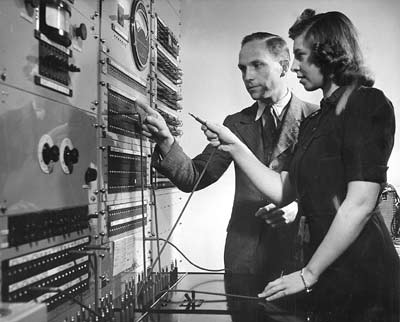
The first three photos on this page show training sessions
taking place in 1941.
When the war began the government decided that BBC engineering staff above the age of twenty-three should be exempt from military service. However about fifty engineers above that age were transferred at the request of the Air Ministry to undertake special wireless work. By March 1941 nearly 400 had left to serve in the Forces. By June 1942 the BBC had lost over 70 per cent of its experienced pre-war engineers and by the end of the war over 500 had been released to the forces. Junior engineers were being lost too. Having joined at the aged of seventeen or eighteen they became eligible for call-up at nineteen, just as they were becoming useful.
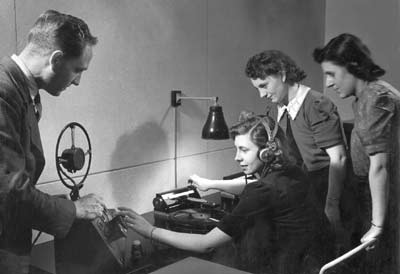
Soon some of the new recruits were sent to transmitting stations, initially allowed to work only in the control rooms though this restriction was lifted in September. The following year women operators were sent to some Group H transmitters and by the end of 1942 they were working at twenty-seven of these stations. They were not allowed to rectify faults at first, having to wait for help from the Engineer-in-Charge or his deputy. This lengthened the duration of the breakdowns but it wasn't until May 1943 that it was agreed that women operators could do simple unsupervised maintenance work.
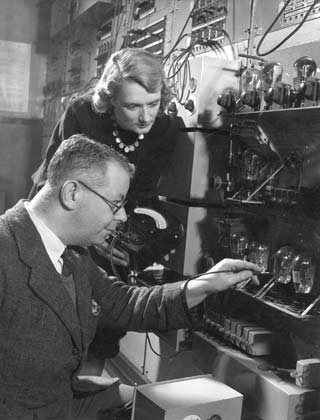
By the end of 1942 there were five hundred women operators - a quarter of the Operations and Maintenance complement. In all, over eight hundred women operators were recruited and trained during the war.
The 1945 BBC Year Book included this comment:
It has been particularly noteworthy how women operators with no previous technical experience whatever have absorbed the intricacies of broadcasting and have become, within a few months, useful members of the staff.In 1971, twenty-six years later, there were seventeen of the wartime women staff still working in engineering operations.
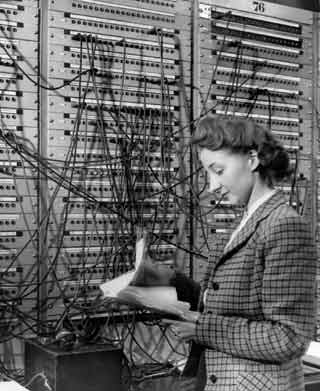
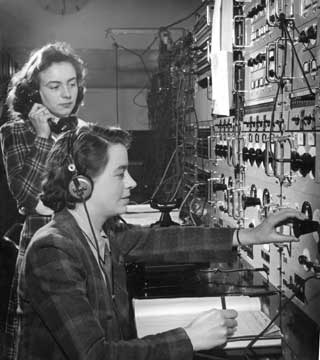
Two shots taken in the 1940s BH Control Room. The young lady in the picture on the right is Joyce Perry who worked for the BBC from 1942 to 1947.

